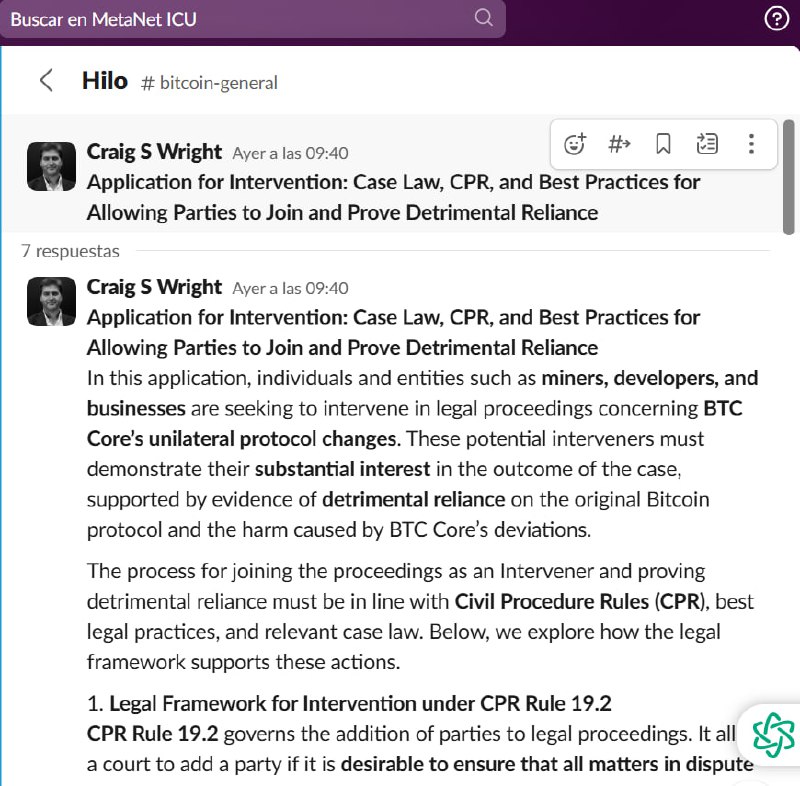tg-me.com/CSW_Slack/6701
Last Update:
Proof of Reliance: Interveners must show that they took significant actions based on these assurances. For example:
Miners should provide invoices, contracts, and financial records showing investments in ASIC hardware designed for the original Bitcoin protocol.
Developers should submit project plans, software code, and financial documentation showing the abandonment or rewriting of projects due to protocol changes.
Businesses should present business plans, financial statements, and other records demonstrating reliance on the protocol’s stability for operational success.
Proof of Harm: Interveners must prove that BTC Core’s unilateral changes caused substantial harm to their investments, business operations, or development efforts. This can include financial loss statements, expert assessments of the cost of protocol changes, and evidence of disrupted operations.
In Baird Textile Holdings Ltd v Marks & Spencer plc [2001] EWCA Civ 274, the court examined detrimental reliance in a commercial context, emphasising that there must be clear and unequivocal representations and reliance that leads to a detriment. This principle supports the Interveners' argument, as BTC Core’s changes led to stranded investments, unusable software, and business disruptions.
09:41
3. Best Practices for Joining the Proceedings and Proving Claims
Step 1: Formal Application for Intervention
Each potential Intervener must submit an application to the court requesting permission to join the proceedings. This application must comply with CPR 23 and include:
A statement of case outlining the basis for their intervention.
The evidence of detrimental reliance, as outlined above.
A clear explanation of the harm they have suffered and how BTC Core’s actions are directly responsible.
Step 2: Evidence Gathering and Presentation
To effectively prove their case, Interveners should adhere to best practices in evidence gathering:
Document Preservation: Interveners should preserve all records, contracts, communications, and other documents that demonstrate reliance on BTC Core’s assurances and the resulting harm. For example:
Contracts for mining hardware purchases.
Developer agreements, software plans, or repositories showing abandoned or rewritten projects.
Financial projections that were disrupted due to protocol changes.
Expert Testimony: In complex cases like this, expert testimony can help quantify financial losses or explain the technical impact of BTC Core’s protocol changes. Experts in blockchain technology, financial losses, or development costs can offer critical insights to substantiate the Interveners’ claims.
Step 3: Legal Arguments Supporting Intervention
The Interveners' legal strategy must emphasise their substantial interest in the case and the fact that their inclusion is necessary for justice. This can be argued using principles from R v Panel on Takeovers and Mergers, ex p Datafin plc [1987] QB 815, where the court held that private bodies with significant control over public interests must be subject to scrutiny. BTC Core, by controlling Bitcoin’s protocol, holds significant power over the ecosystem, and their actions must be examined in light of the harm caused to key participants.
2/3
CSW
Oct 23, 2024
https://metanet-icu.slack.com/archives/C5131HKFX/p1729669200147329
https://www.tg-me.com/us/CSW Slack Channel/com.CSW_Slack/6699
BY CSW - Slack Channel

Share with your friend now:
tg-me.com/CSW_Slack/6701
